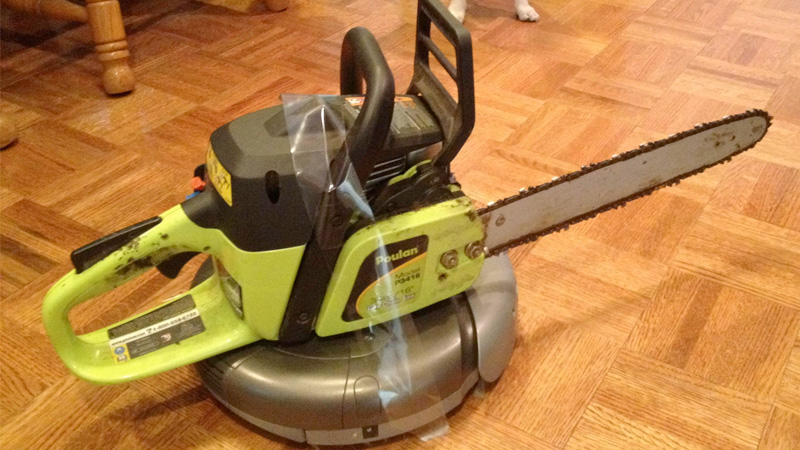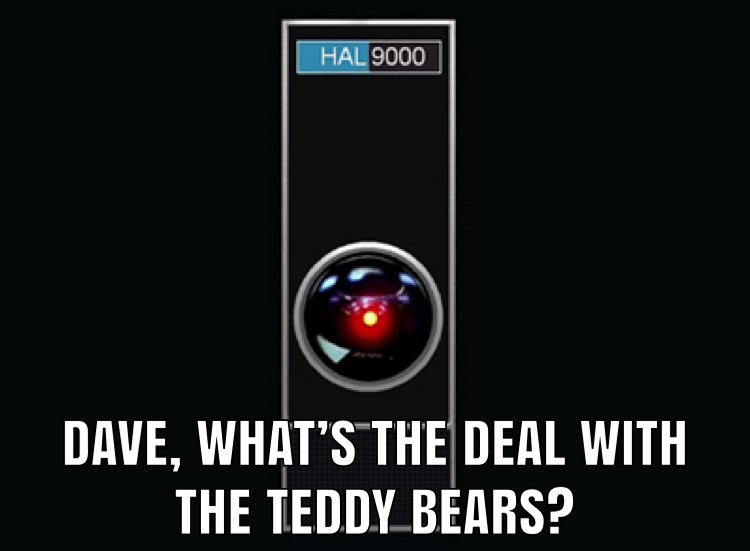*ominous music begins to play*
The year is 2056 and all of humanity has been enslaved by robots…ok that’s enough of that.
Hollywood has done a lot to help educate the public about technology. Artificial Intelligence (AI) seems to be the one that is “scariest” to humanity because of all the ways it can go wrong
So lets start there with de-mystifying AI and why it’s not going to try and conquer the world without you. Artificial Intelligence is a program that gets smarter every time you run it. If you’ve ever seen a Roomba robotic vacuum…everyone would assume that is AI. It is not. The robot is simply running the program: if you hit a wall, change direction. If you hit another wall, change direction again. When full or when low on power, find docking station with sensors. Repeat until obsolete with newer model found in Skymall.

If you’ve ever owned one of these, (non-weaponized Roomba) you know they randomly attempt to clean your floor. They don’t run 1000 cycles and are significantly better on the 1001 cycle versus the first. If a Roomba were Artificial Intelligence, it would “learn” every time it ran a cycle. If the robot was running that kind of programming it would learn where your furniture is and never run into objects. It would also find the optimal pattern to cover 100% of the floor over time
Until now we’ve not used the term Machine Learning (ML). We did that on purpose to help make a clear delineation of what ML consists of. Oddly enough, ML and AI get confused all the time, even among technologists. Most examples of AI is just machine learning done really well.
Everyone’s friends, and unofficial wiretapping devices, Siri and Alexa, are not AI. They are glorified Roombas running a scripted program. So how where do you draw the “line in the sand” between machine learning and artificial intelligence?
Machine Learning: Machine learning is a program that looks for patterns and provides recommendations for those patterns. It’s up to the human being to test out the recommendations to see which one is the best option.
Artificial Intelligence: AI is a much more complicated decision making program than machine learning. It has multiple decisions it could/can make when presented with a scenario. Not only does it have the ability to make multiple decisions, in most cases, it remembers what it did previous and looks for ways to improve using those different decisions.
So let’s put this into an example people can understand: a Roomba robot vacuum. Your Roomba is using machine learning to figure out how to cover a 100 sq foot room with furniture. It bounces around and eventually will clean the entire floor. In the process its hit some items multiple times and essentially uses “dumb luck” to complete the task.

Now, you rip out the computer chip and install AI because that’s how you roll. (you rebel you) Your Roomba now starts running random patterns and hits a table leg. It then circles the table leg, mapping out its location, and then moves on. After dozens or even hundreds of cycles like that it starts running parallel lines like its mowing grass, missing every table leg in the room. It then changes to diagonal lines, then circles, then a spiral square, then herringbone pattern. Eventually, the AI learns the most efficient pattern to clean your floor, all while avoiding furniture legs, and still gets close enough to clean the corners and avoid cords.
Your Roomba has taken basic programming concept of “run until hit wall, turn left” to “find the most efficient way to become full without running out of power or hitting furniture”.
The interesting thing is the line between a high function machine learning solution and a low level AI is tough to discern. As consultants we’ve seen a lot of AI solutions that are just machine learning.
There’s a bartender joke that applies here. “The difference between a rum and coke and a Cuba Libra? …$1.50 and a lime.” There is a significant cost difference between machine learning and AI. There’s also more marketability of AI over machine learning.
So, looking back at the Data Hierarchy we’ve already covered and how you get to AI. Your incoming data Reporting is comprehensive and all inclusive, it’s not being filtered or scrubbed. Your Business Intelligence is able to report the real time analytics from your data. Descriptive Data is diving deeper into the why behind your BI. Predictive Data is narrowing the “what if” scenarios down to a manageable number of options. Prescriptive Data is running up and down the data looking for how to optimize the outcomes to your desired results. And now *drum roll* you flip the switch on Artificial Intelligence and it does everything else for you…right? Wrong
AI takes all the data results you’ve had previously and learns your business. It learns what happens when you move any given variable. It learns what kind of outcomes you are looking for. It is the eccentric and task obsessed employee everyone needs but never finds. It learns how to make your business better 24/7 and it isn’t afraid to fail.
The “scary” AI from Hollywood is autonomous and/or sentient–meaning it comes up with a solution and executes it on its own. It inevitably determines humans are virus, they need bio electricity to themselves, humans become batteries, Neo is the one, and he can’t die because Trinity loves him. Hollywood AI is just that–Hollywood.
As it turns out, AI isn’t scary. AI is the super helpful employee nobody knows about. AI, when done right, will recommend well thought out data supported options for human evaluation and action.

Instead of HAL, from 2001 a Space Odyssey, asking (ominously) “What are you doing Dave?”. HAL says “Dave, you should buy blue teddy bears in bulk in October. Red teddy bears should never be bought in bulk and only in January. If you do those two things you’ll earn an extra $127,438.43 this year.”
The real kicker with AI is how important the preceding Data Hierarchy elements are to have a smart, successful recommender. If you skip steps, If your data isn’t accurate, if you haven’t had multiple iterations of your team correcting interpretations by your Machine Learning, your AI will be worthless. It will simply learn “bad habits” and suggest things that don’t make sense or work for that matter. The morale of the story is, you probably could skip steps–but don’t. There is no shortcut to AI. All the more important to start now.
If you wait until your competitor has AI, and your not already at ML, your doomed. You are just the next bit of dirt the Roomba is coming to pick up. Make your decision to start up the hierarchy now. The Roomba is on its way and it won’t slow down just because there is a table leg in its way…
Quickly jump back to the previous segments using the buttons below.
